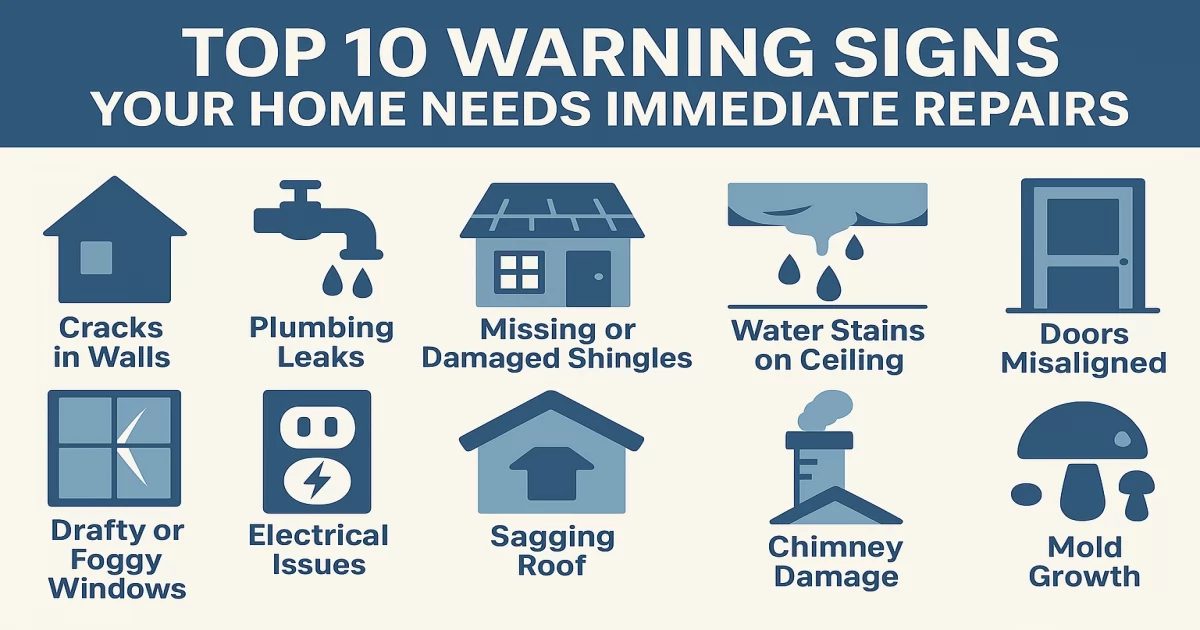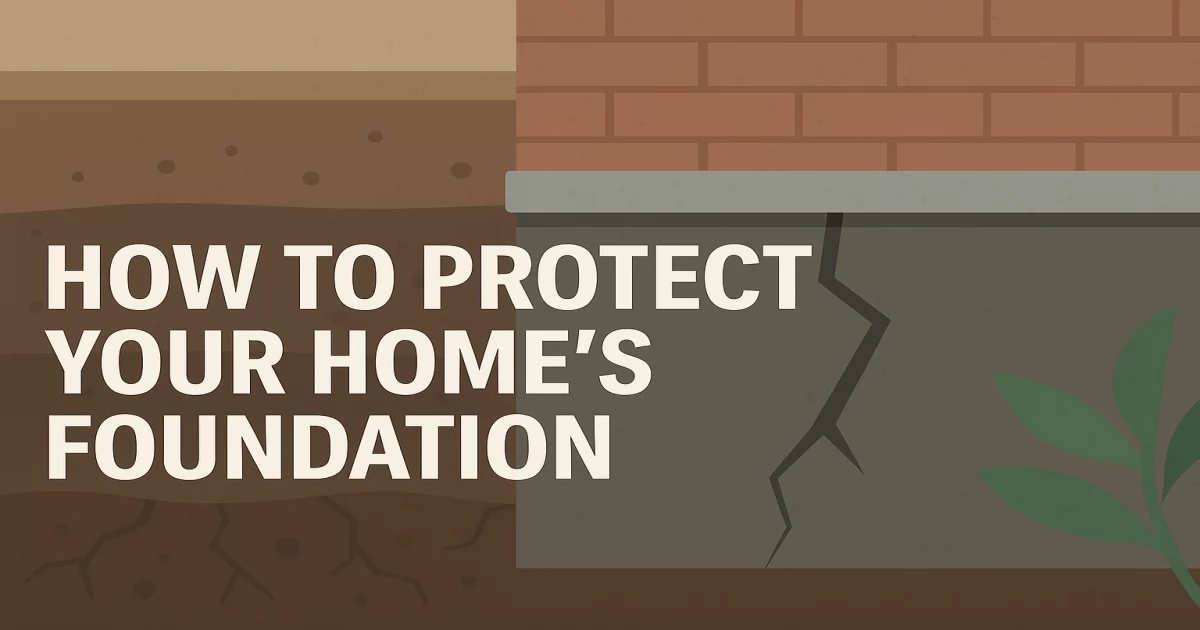Top 10 Warning Signs Your Home Needs Immediate Repairs
Learn the top 10 urgent warning signs your home may need immediate repairs to prevent costly damage and maintain safety.

Cracks in Walls or Ceilings
Not all cracks are cause for concern, but knowing how to read them is crucial. Hairline cracks in drywall can be normal from settling or seasonal changes. However, large, widening, or jagged cracks—especially those in a stair-step pattern on brick or block walls—may signal foundational movement or structural stress. Vertical or diagonal cracks near door frames, windows, or the corners of rooms are particularly telling. Cracks accompanied by water stains, bulging drywall, or crumbling plaster could also indicate a leak behind the surface. These situations require evaluation by a structural engineer or foundation specialist.
Persistent Roof Leaks
A leaking roof is more than an inconvenience—it’s a gateway for significant damage. Over time, even a slow leak can rot wooden supports, compromise insulation, and encourage mold growth within walls and ceilings. Signs include damp or sagging ceiling panels, visible mold, musty odors in the attic, and dark water rings. Pay special attention after heavy rains or snowmelt. Common sources of leaks include cracked flashing, damaged shingles, poor ventilation, and clogged gutters. Address roof leaks quickly to prevent internal structural decay and sky-high repair bills.
Unusual Electrical Problems
Electrical issues should never be ignored. Frequent breaker trips, buzzing outlets, dimming lights when appliances are running, or sparks from sockets can all be signs of overloaded circuits, short circuits, or deteriorating wiring. In older homes, aluminum or knob-and-tube wiring may no longer meet safety standards and could pose a significant fire hazard. Flickering lights and warm outlet covers are particularly urgent indicators of dangerous electrical faults. If you notice a burning smell or discoloration around outlets, shut off power to that area and contact an electrician immediately.
Sudden Drop in Water Pressure
Low water pressure can be more than just a plumbing nuisance—it often indicates larger problems such as mineral buildup in pipes, broken pressure regulators, or undetected leaks. If the pressure drop is localized to one fixture, it might be a clogged aerator. However, whole-house pressure loss suggests an issue with your main water line or aging galvanized pipes. In extreme cases, a slab leak beneath the foundation could be the culprit, leading to erosion and severe structural problems. Monitor your water bill and listen for hissing or running water sounds when everything is off.
Doors or Windows That Stick
While slight sticking can result from seasonal humidity changes, persistent or worsening issues often point to something more serious. Foundation settling, moisture damage in the framing, or termite infestation can cause door and window frames to shift, warp, or swell. Misaligned locks, gaps around the frame, or visible separations in trim or baseboards are telltale signs. Left unchecked, this can escalate into costly structural realignment or major frame reconstruction.
Mold or Musty Odors
Mold thrives in damp, dark, and poorly ventilated areas, making basements, bathrooms, and attics common hotspots. Even if you can't see it, a persistent musty smell is a strong indicator of hidden mold growth behind walls or under flooring. This can result from unnoticed leaks, condensation problems, or poor ventilation. Mold not only damages building materials but can also lead to health issues such as allergies, asthma, and respiratory infections. Use a moisture meter to investigate suspicious areas and consider air quality testing if symptoms persist in the household.
Peeling Paint or Wallpaper
Blistering, bubbling, or peeling paint—especially in bathrooms, kitchens, or near windows—often points to excess humidity or hidden leaks behind the walls. These moisture problems can stem from poor ventilation, plumbing leaks, or roof seepage. Over time, persistent moisture breaks down paint adhesion and can foster mold or mildew growth. If the affected wall feels soft or spongy, there’s likely water damage in the drywall. Address the moisture source first before repainting to avoid recurring damage.
Uneven or Sagging Floors
Floors that squeak, bounce, sag, or slope are red flags for foundational or subfloor problems. These issues could stem from rotted joists, termite damage, or water saturation over time. Crawl spaces and basements should be checked for excessive moisture or evidence of pests. Shifting soil, poor construction, or water pooling beneath the foundation may also cause structural movement. Use a level to assess floor pitch and bring in a structural contractor if you suspect foundational instability.
Strange Noises in Plumbing or HVAC
Noises like banging, gurgling, screeching, or hissing from your plumbing or HVAC system can indicate mechanical failure, trapped air, water hammer, or sediment buildup. In plumbing, these sounds may suggest air trapped in the lines or high water pressure. In HVAC systems, odd noises could point to a failing blower motor, loose parts, or dirty filters and ducts. Prompt diagnosis and servicing can prevent full system failures and extend equipment lifespan.
Excessive Moisture in Basement or Crawl Space
Water pooling in basements or persistent dampness in crawl spaces are clear signs of drainage problems, poor grading, or foundation cracks. This excess moisture can compromise wooden framing, promote mold growth, and attract pests like termites or rodents. Common causes include clogged gutters, improper downspout placement, hydrostatic pressure, and failed sump pumps. Install a dehumidifier, improve exterior drainage, and seal foundation cracks to mitigate long-term damage.
- Inspect your home seasonally for these common warning signs.
- Address minor issues early to avoid costly major repairs later.
- When in doubt, consult a licensed professional for a proper assessment.
By staying alert to these warning signs, homeowners can take proactive steps to prevent widespread damage and ensure long-term safety and comfort. Investing time and effort into early repairs can save you thousands of dollars down the road—and protect your biggest investment: your home.


